|
|
|
The analysis of the aeroelastic behaviour of a wind turbine is not only an indispensable procedure for certifying a machine, but also an exercise which should become routine, in view of optimising the design of future wind energy applications. In particular the shifting to less friendly sites makes it necessary to check again the reliability of our designs. In this connection low computational cost is an absolute requirement, met only by engineering models at least for computer resources usually available in the industry.
 To develop and evaluate a fast but still accurate aeroelastic
model.
To develop and evaluate a fast but still accurate aeroelastic
model.
 To investigate the impact of the different operational parameters
(turbulence intensity, scales, wind shear, yaw misalignment) on
the loading of a wind turbine.
To investigate the impact of the different operational parameters
(turbulence intensity, scales, wind shear, yaw misalignment) on
the loading of a wind turbine.
RAFT is a synthesis of three models:
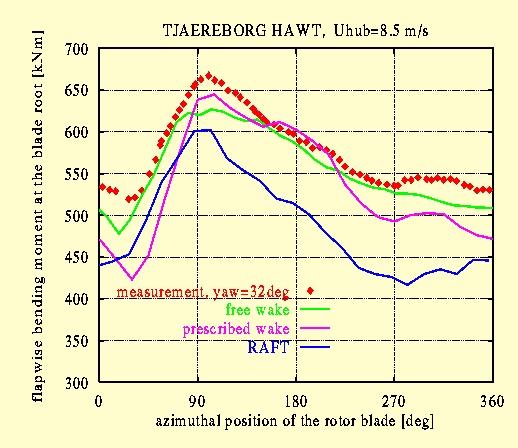
Evaluation of RAFT for a yawed operation case
 The aerodynamic model based on the blade element method. The
model accounts for dynamic inflow effects as well as dynamic stall.
The latter is modelled by means of the ONERA empirical model.
The aerodynamic model based on the blade element method. The
model accounts for dynamic inflow effects as well as dynamic stall.
The latter is modelled by means of the ONERA empirical model.
 The structural model based on the beam approximation. The beam
equations are solved by means of the finite element method.
The structural model based on the beam approximation. The beam
equations are solved by means of the finite element method.
 The turbulent wind inflow simulation model based on the Veers'
model.
The turbulent wind inflow simulation model based on the Veers'
model.
The first step of this work was to evaluate RAFT against measurements and predictions from other more elaborate models. Fast pitch steps as well as cases of yawed operation using deterministic inflow, were simulated. Experience and information from a complete data base of numerical results from a free wake model guided the finalisation of RAFT. In most cases, the quality of the predictions was satisfactory for a wide range of machines of different sizes. Mean value shifting on the variations of loads were detected in some cases but even in those cases the ranges of the overshoots and the shapes of the variations were correct.
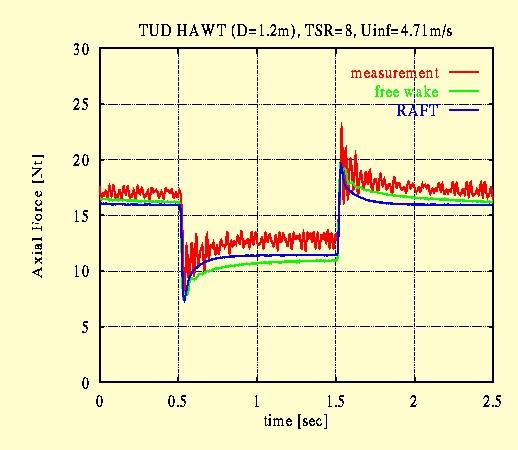
Evaluation of RAFT for a fast pitch step case: from to 2o and back to -2o
The model was also checked against measurements in cases of turbulent inflow. Measurements of the loads on the blade of a VESTAS V27 operating in a complex terrain site (Andros island) were used. The results showed that the overall characteristics were reproduced in a satisfactory way.
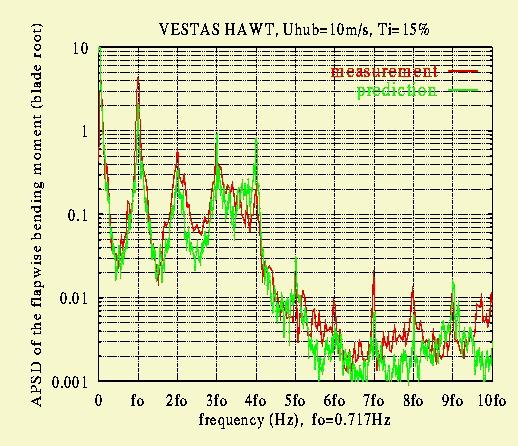
Evaluation of RAFT for turbulent inflow: ASPD diagramm
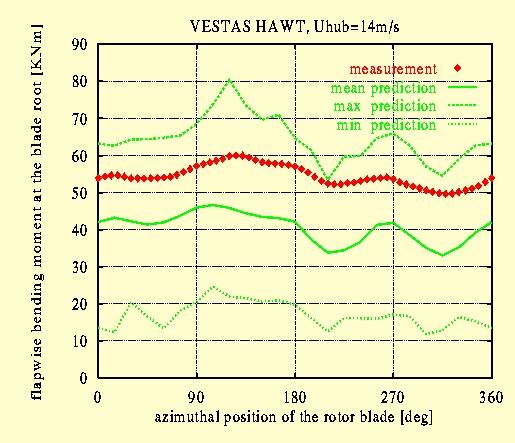
Evaluation of RAFT for turbulent inflow: Azimuthal Binning diagramm
At a second level a parametric investigation of the operational parameters was carried out for several wind turbines of different sizes (VESTAS D=27m ,WINCON D=21, MADE D=30m, NORDTANK D=37m) and power output. Aim of this study, as already mentioned, was to quantify the influence of the terrain parameters on the fatigue loads of the rotor blades. From this analysis it came out that yaw misalignment and turbulence intensity play an important role by charging significantly the loading of a wind turbine.
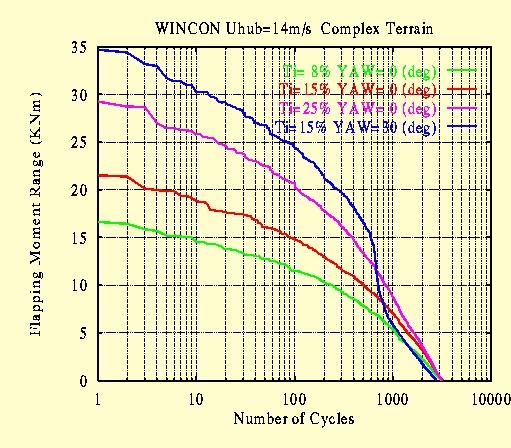
Influence of Turbulence Intensity and Yaw misalignment on the cumulative rainflow counting plots (Length scales used: Lu=50, Lv=30, Lw=10)
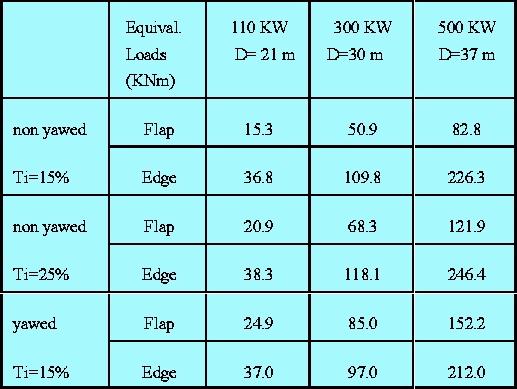
Table presenting the influence of Turbulence Intensity and Yaw misalignment on the Equivalent Fatigue loads of the blade of different machines
In the postprocessing toolkit of RAFT there is the possibility to calculate stresses and strains using thin-wall shell theory. This option completes RAFT as an analysis tool.
In terms of computer cost, approximately real-time simulations can be performed.
|
|
|
|
|
|